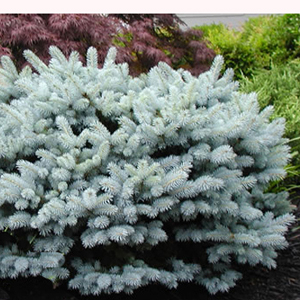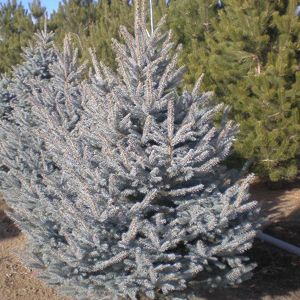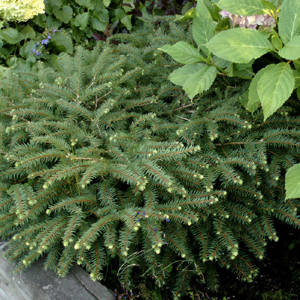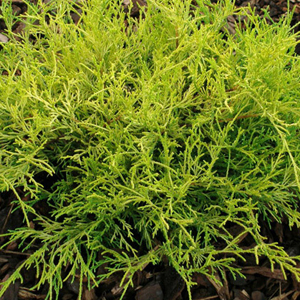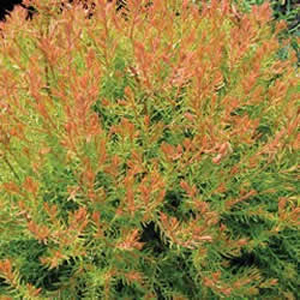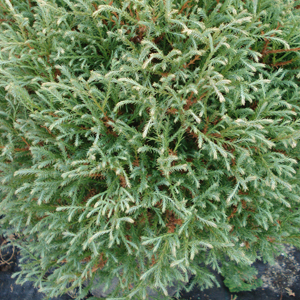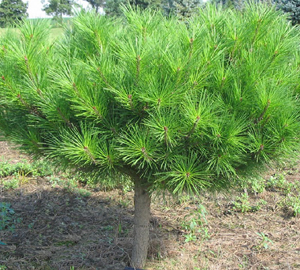What is a dwarf conifer? A conifer is technically a plant that produces cones… pine cones immediately come to mind. Most conifers are evergreen. Dwarf conifers are cone-bearing plants that are smaller in size than their straight species. They are not plants that have been severely pruned or stunted with poor nutrition or difficult growing conditions; rather, when full grown they will be mature trees that have been selected for their small size. They have the same needle color and branch characteristics as their larger cousins; they just don’t get as big.
This can be a real asset for our urban properties. The small stature of dwarf conifers enables them to fit into most landscape situations. Most properties don’t need a 60-foot tall evergreen to screen the neighbors when one that matures at 20 feet tall will do.
With today’s busy lifestyles, adding dwarf conifers to the landscape is a great way to reduce overall maintenance while adding year-round interest. Perennial gardens are lovely, but take a great deal of time to maintaim. The addition of a Globe Blue Spruce or a Golden Mops Chamaecyparis will fill the space and reduce the number of plants needing regular deadheading, staking and pinching. They will provide interesting color, texture and structure to any garden bed. In winter, after perennials have died back and deciduous shrubs have lost their leaves, these small evergreens hold the bed together and provide winter interest.
One note of caution: we don’t recommend Dwarf Mugo Pine. Although they a beautiful dwarf evergreen, they are very susceptible to Pine Sawfly larvae. When they are attacked, they can be completely stripped of last year’s needles within a day or two. This damage ruins their form and makes them unsightly.
These are a few of our favorite dwarf conifers:
Dwarf Globe Blue Spruce Picea pungens ‘Glauca Globosa’ has a rounded shape with a flat top. Silver-blue needles look especially blue when they first emerge in spring. Deer and rabbit-resistant. 3-5’ tall x 4-6’ wide. Full sun.
Fat Albert Blue Spruce Picea pungens ‘Fat Albert’. Unlike its awkward name suggests, this showy, blue-needled evergreen actually has a refined pyramidal shape, and its taller height allows for more landscape uses. Deer and rabbit-resistant. 10-15′ tall x 10′ wide. Full sun.
Bird’s Nest Spruce Picea abies ‘Nidiformis’. Small and squat, with a hollow center, this little evergreen with bright green needles looks like its common name suggests. Deer and rabbit-resistant. 2-3′ tall x 2-3′ wide. Full sun.
Dwarf Hinoki Cypress Chamaecyparis obtusa ‘Compacta’. A distinctive pyramidal evergreen with coiled, deep green branches that are reminiscent of corals. Perfect for the Asian-themed garden. Best in a location protected from wind and salt. Deer and rabbit-resistant. 6-8′ tall, 3-5′ wide. Part shade.
Fernspray Cypress Chamaecyparis obtusa ‘Filicoides’. An upright evergreen with an open, irregular habit, and unusual sprays of lush, fern-like foliage. Also perfect for an Asian-themed garden. Deer and rabbit resistant. Best in a protected location. 6′ tall x 4′ wide. Full sun-light shade.
Little Mops Cypress Chamaecyparis pisifera ‘Mops’. Dainty and delightful, this low-mounding evergreen is also called Threadleaf Falsecypress. It has a very fine texture and brilliant yellow, scale-like foliage. Grows slowly to 5′ tall x 5′ wide. Full sun-part shade.
Fire Chief Arborviate Thuja occidentalis ‘Congrabe’. A unique selection with green needles that have orange-red tips. Best color in full sun. 3-4′ tall x 3-4′ wide. Full sun-light shade.
Mr. Bowling Ball Arborvitae Thuja occidentalis ‘Bobazam’. A perfectly round, small evergreen with soft, finely textured, gray-green foliage. 2-3′ tall x 2-3′ wide. Full sun-light shade.
Compact Tanyosho Pine Pinus densiflora ‘Umbraculifera’. Also known as Japanese Umbrella Pine because of its shape, it offers striking orange bark and long, upright needles. Makes a very beautiful specimen. 8-10′ tall x 10-12′ wide.

